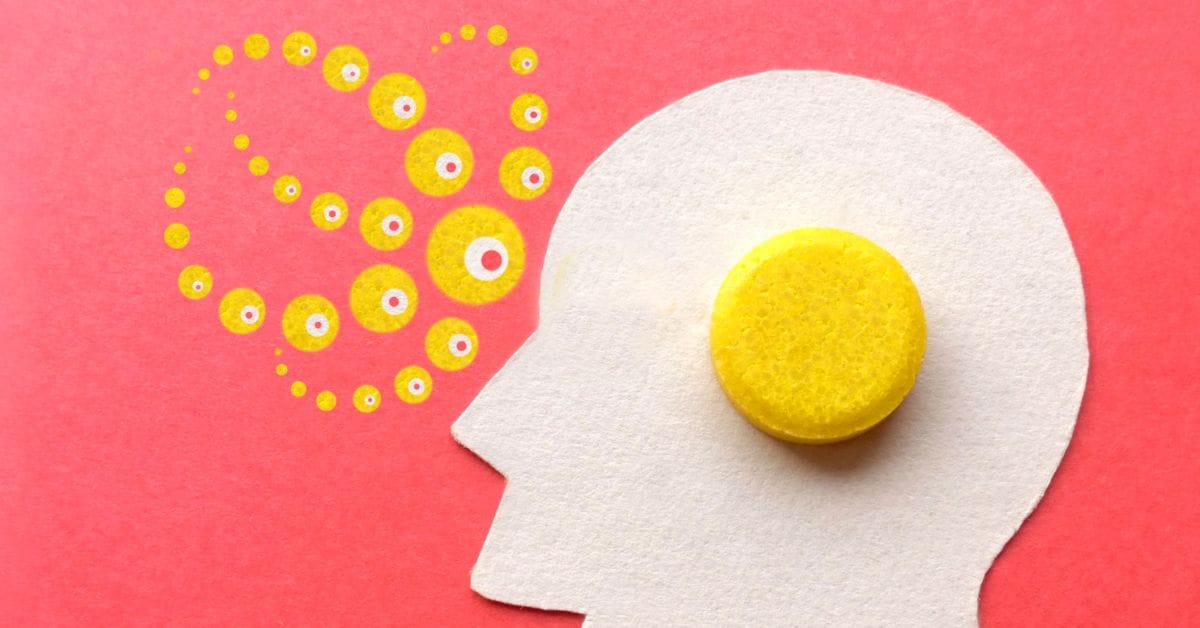You’ve likely heard about Ecstasy, also known as MDMA, but do you know how long it stays in your system? The answer isn’t straightforward; it depends on various factors such as dosage, metabolism rate, drug purity, and even your body’s natural detoxification process. You’ll also have to consider the physical after-effects of consumption—yes, they’re real. Plus, we’ll delve into detection times for drug tests which might be a concern for some. So if you’re curious or simply want to stay informed about what this popular party drug can do to your body long after the high is gone, then keep reading. We’re going to crack down on the details and provide insights on how you can potentially accelerate its removal from your system.
Understanding the Nature of MDMA
Before we delve into how long MDMA sticks around, let’s paint a picture of what this potent substance really is – it’s not just your run-of-the-mill party drug, it’s a powerful psychoactive that profoundly alters perception and mood. Known by street names like ecstasy or molly, MDMA (3,4-Methylenedioxymethamphetamine) has its roots in the world of pharmaceuticals. It was first synthesised in 1912 by German scientists seeking to develop a medication to control bleeding. However, its mind-altering effects weren’t fully realised until the mid-1970s.
MDMA’s origin story gives an insight into why it’s such a complex drug. Its unique chemical structure allows it to stimulate the release of several neurotransmitters in the brain – serotonin, dopamine and norepinephrine – which trigger feelings of intense euphoria, heightened sensory perception and increased empathy towards others. This potent combination makes MDMA particularly appealing for recreational use at social gatherings like concerts or festivals.
But there are significant social implications tied to its use. While some users report positive experiences such as increased sociability and enhanced mood, these short-term benefits often mask longer-lasting negative effects including insomnia, anxiety and depression. Furthermore, repeated use can lead to serious health risks such as heart problems and liver damage.
So while it may be tempting to view MDMA purely as a hedonistic escape from reality or even therapeutic aid in some circles – this simplified perspective neglects the full scope of potential emotional and physical repercussions that come with its consumption. Understanding both where MDMA comes from and how it affects our minds helps us make informed decisions about its usage – whether recreational or otherwise.
The Impact of Dosage on Duration

The amount you take can significantly influence how much time it’ll linger in your body. When you ingest MDMA, also known as ecstasy, the body begins to metabolise and eliminate it. However, the rate of this process is heavily impacted by factors such as dosage, frequency of use, and individual biology.
Dosage escalation is a critical aspect to consider. It’s a common pattern among regular users who find that they need increasing amounts of the drug to achieve the desired effects – an indication of tolerance development. This increase in intake can extend the period that ecstasy stays in your system due to overloading your body’s ability to metabolise and excrete it efficiently.
You might wonder why tolerance develops with MDMA use. The reason lies within your brain chemistry: repeated exposure to ecstasy causes changes in certain neurotransmitters, leading your brain cells to become less responsive over time.
Now, here’s where dosage intersects with duration: A higher dose doesn’t just mean more intense effects; it also means a longer stay for MDMA in your system. With large doses or frequent usage, traces of MDMA can be detected through blood tests up to 48 hours after ingestion and urine tests up to four days later.
So remember this – while ecstasy might provide short-term euphoria or heightened sensory experiences at parties or raves, its presence persists well beyond these fleeting moments due to dosage escalation and tolerance development. Be aware of these considerations when making decisions about MDMA usage – knowledge is power when dealing with potent substances like this one.
The Role of Metabolism
When it comes to how quickly your body can clear out this party drug, metabolism plays a huge part. MDMA, or ecstasy as it’s commonly known, is metabolised by your liver and then eliminated through your urine. But the speed at which this happens can vary drastically from person to person due to Metabolism Variations.
Metabolism variations refer to the differences in how individuals’ bodies break down substances. These variations occur because of factors such as age, weight, sex, and overall health. For example, younger individuals usually have faster metabolic rates than older ones. Similarly, people with higher body weights tend to metabolise substances more slowly than those with lower weights.
Another significant factor influencing metabolism is Genetic Influence. Your genes determine the number and functionality of enzymes in your liver responsible for breaking down drugs like MDMA. Some people naturally produce more of these enzymes or more effective versions of them – leading to a quicker metabolism of the drug and thus a shorter duration of its presence in their system.
However, while genetics play an important role in determining how long MDMA stays in your system, they are not the only factor at play here. Other considerations like drug interactions could slow down or speed up this process significantly.
Understanding these complexities surrounding metabolism is crucial when considering MDMA use and potential detection times for tests. It’s never just as simple as taking a pill and waiting for it to wear off; many factors influence what happens inside your body after ingestion – factors that could extend or reduce the time ecstasy remains detectable in your system.
Influence of Drug Purity
Considering the purity of the drug you’re taking can significantly alter how your body metabolises it. When we talk about ecstasy or MDMA, its purity isn’t always assured. In fact, it often contains various adulterants that can influence its effects on your system.
Purity measurements are critical in determining how long MDMA stays in your system. The higher the purity level, the more intense and immediate the drug’s effects tend to be. This is because pure MDMA gets absorbed into your bloodstream more quickly, leading to faster metabolism and excretion from your system.
Adulterants also play an influential role here. Many street versions of ecstasy contain other substances such as caffeine, amphetamines, or even hallucinogens which can not only extend the high but also prolong the presence of these compounds in your body since each has a different metabolic rate.
Moreover, adulterants may potentially interact with MDMA in ways that alter its pharmacokinetics – that is, how it’s absorbed, distributed throughout your body, metabolised and eventually excreted. These interactions could lead to unforeseen side-effects and complicate detoxification processes used by medical professionals during treatment for overdose or addiction recovery.
Maintaining awareness about these factors adds another layer of complexity when trying to determine how long ecstasy will stay within one’s system. It underscores why those who choose to use this drug should do so with caution – understanding not just its immediate effects but also considering potential residual impacts caused by varying levels of purity and added adulterants.
The Detoxification Process
You’ve got to remember, detoxifying your body from any substances you may have ingested involves a complex and lengthy process. This is especially true for MDMA, also known as ecstasy. Its residual effects mean it can linger in your system for quite some time, even after the immediate effects have worn off.
Amid this scenario, ‘Detox diets effectiveness’ has become a popular discussion point. Although there’s no magic bullet diet that can instantly flush out toxins, certain nutrients support the liver and kidneys – the main organs involved in detoxification. For example, foods rich in antioxidants or compounds like glutathione can aid these organs in breaking down harmful substances.
In addition to dietary considerations, natural remedies exploration may provide supplementary support for detoxification. Herbal teas such as milk thistle and dandelion root are often touted for their potential cleansing properties. Similarly, staying hydrated helps maintain healthy kidney function and might expedite the removal of MDMA metabolites from your system.
However, it’s crucial to approach these remedies with realistic expectations. While they may bolster overall health and support organ function during detoxification, they won’t speed up the process dramatically or eliminate all traces of MDMA immediately.
The length of time MDMA stays in your system varies based on several factors including dosage taken, frequency of use, individual metabolism rates among others. Hence it’s difficult to predict an exact timeline for complete detoxification.
Remember though; while natural remedies and certain diets might aid in supporting a healthy detox process after MDMA ingestion, nothing replaces professional medical advice or intervention when dealing with substance misuse or addiction issues.
The Duration of Psychological Impact

It’s no secret that the psychological fallout from an MDMA trip can actually outlast its physical presence in your body. This is mainly due to how ecstasy alters brain chemistry during use, leading to a cascade of effects that linger even after the substance has been metabolised and eliminated from your system.
While ecstasy works by releasing large amounts of serotonin in your brain, once it leaves your system, you may experience a significant drop in this ‘feel-good’ neurotransmitter level. This abrupt change can significantly impact emotional stability and mood regulation. You might find yourself feeling down or blue for days or even weeks following an MDMA high, a phenomenon often referred to as “Tuesday Blues” because of its typical onset three days after weekend use.
Extended periods of low serotonin levels can also contribute to depression onset or exacerbate existing depressive symptoms. Moreover, research suggests that long-term ecstasy users may be at increased risk for sleep disorders, memory issues, and other cognitive deficits due to changes in brain neurochemistry.
These residual psychological effects are highly variable among individuals with factors like genetics and personal health history playing significant roles. Some people might bounce back quickly while others could struggle with these symptoms for extended periods.
Understanding the duration and potential severity of these psychological impacts underscores the importance of caution when it comes to MDMA use. It’s not merely about how long the drug stays in your system – it’s also about dealing with lingering mental health consequences well beyond its physical presence.
Physical After-effects of Consumption
While the euphoric rush of using might seem like an intense ride, the physical toll it takes on your body can be downright shattering. MDMA, also known as ecstasy, stimulates your central nervous system and alters your perception of reality. This does not come without consequences.
One immediate effect you may experience is dehydration. Ecstasy increases your heart rate and blood pressure, causing excessive sweating. It’s crucial to remember the importance of hydration in these situations; neglecting to replace lost fluids could lead to severe health risks such as heat stroke or kidney failure.
Moreover, MDMA disrupts your normal sleep patterns due to its stimulating properties. You might feel energised for hours after consumption but once this energy wears off, you’ll likely experience extreme fatigue coupled with insomnia – a cruel paradox indeed! Sound sleep recovery is essential for the restoration of bodily functions and mental alertness.
The drug also wreaks havoc on other aspects of your physical well-being. Users often report muscle tension, nausea, blurred vision and chills during their ‘trip’. The days following use are characterised by a ‘comedown’ period where symptoms such as loss of appetite, depression and irritability occur.
It’s important to remember that these after-effects don’t merely disappear once the high subsides. They linger within your system for varying periods depending on factors such as dosage taken and individual metabolism rates – making them persistent reminders of the toll that ecstasy takes on one’s body. So while initially appealing in promise of euphoria, MDMA proves itself damaging in its aftermath – a harsh reality hidden beneath transient pleasure.
Detection in Drug Tests
Ever wondered how long those wild party nights can be traced back to you? Well, if you’ve ever indulged in ecstasy or MDMA, this question might hold some importance. Drug tests are designed to detect traces of substances within your body and the detection window for MDMA largely depends on factors such as frequency of use, dosage, body mass index (BMI), metabolism rate and overall health condition.
Standard drug tests like urine tests can detect MDMA up to 2-5 days after consumption. However, this period may extend depending on the aforementioned variables. A heavy user with slower metabolism might find that the drug lingers in their system for a longer time compared to a first-time user with a fast metabolic rate. This is because MDMA is fat-soluble and tends to accumulate in fatty tissues from where it slowly gets metabolised and excreted out of the body.
Test reliability also weighs into this equation. No test is infallible; false positives do occur due to cross-reactivity with other substances. For instance, common over-the-counter medications or even certain foods can cause these erroneous results in drug screenings.
Hair follicle tests offer a much wider detection window; they can trace MDMA usage up to 90 days post-consumption. Yet again, these tests aren’t foolproof either – external contamination through second-hand smoke or handling ecstasy tablets could lead to misleading results.
Being aware of these facts not only helps you understand how long drugs stay detectable but also points out potential pitfalls in testing procedures that might skew the outcome.
Factors Affecting Drug Retention
Understanding how MDMA is detected in drug tests provides a solid foundation, but there’s more to the story. The length of time ecstasy stays in your system varies, and it isn’t solely based on the drug’s half-life. Several factors affect its retention. So now let’s delve into what they are.
First off, genetic variations play a significant role. Everyone possesses unique genetics that influence how their body metabolises substances like MDMA. Some people might be naturally efficient at breaking down and excreting the drug due to specific enzyme activity levels dictated by their genetics, making it leave their system quicker than others.
Hydration levels are another key factor worth considering. Maintaining optimal hydration can aid in flushing out toxins from your body, including drugs like ecstasy. This is because water aids kidney function which is crucial for eliminating waste products from your bloodstream; hence good hydration could potentially reduce the time ecstasy lingers in your system.
Apart from these two factors, other elements such as age, overall health status, liver and kidney function also wield substantial influences over how long MDMA might stay in one’s system after ingestion. For instance, young individuals with robust liver and kidney functions may eliminate the drug faster compared to older adults or those with compromised organ functionality.
So while we’ve been able to answer some questions about MDMA detection and retention—it’s clear that multiple variables come into play when determining just how long this substance can remain within an individual’s system post-consumption.
Methods for Accelerating Removal
Curious about how to speed up the process of eliminating this dance floor drug from your body? Let’s dive into some strategies. Firstly, let’s talk about hydration. Hydration importance cannot be overstated when it comes to speeding up MDMA elimination from your system. Drinking plenty of water helps in detoxifying the body by flushing out toxins through urine and sweat. Remember, however, that excessive water intake can lead to electrolyte imbalances.
Now let’s turn our attention to exercises’ benefits in accelerating the removal of ecstasy from your system. Regular physical activity boosts metabolism, which consequently speeds up the rate at which substances are broken down and expelled from your body. Cardiovascular activities like running or cycling can particularly enhance metabolic rates due to increased heart rate and blood circulation.
Diet also plays a crucial role in the drug elimination process. Consuming a diet rich in antioxidants such as fruits and vegetables could potentially aid in faster MDMA breakdown by neutralising harmful free radicals produced during metabolism.
Lastly, getting enough sleep is essential for optimising bodily functions including detoxification processes. Lack of sleep may slow down metabolism hence impeding MDMA elimination.
Bear in mind that these methods might help accelerate the excretion of ecstasy but they cannot guarantee complete removal within a specific time frame due to individual differences such as genetics and overall health status. Always consult a medical professional if you’re dealing with substance abuse issues or experiencing negative effects post-MDMA use for safe guidance on detoxification.
Conclusion
You’ve learned that MDMA’s duration in your body depends on several factors, including dosage, metabolism rate, drug purity, and detoxification process. It’s important to remember the physical after-effects can last even after the drug has left your system. While there are ways to speed up removal, it’s best to understand all aspects of MDMA use before deciding to take it – as its detection in drug tests could have significant consequences.
Learn More About Freeman House Recovery
At Freeman House Recovery, we provide an extensive range of offerings to facilitate holistic and comprehensive addiction treatment. Our treatment methodologies include the 12 Steps, individual therapy and group therapy, inpatient treatment, and medically assisted detox. We recognise the importance of addressing both the mind and body in recovery, which is why we also provide holistic treatment, ecotherapy/nature therapy, and a range of activities to foster a connection to the natural world and promote overall well-being. Understanding that addiction affects more than just the individual, we also offer family support programs to ensure loved ones are part of the recovery process. Our attention to dietary needs sets us apart, offering both Kosher and Halal food options.
We specialise in treating various substance addictions, including but not limited to alcohol addiction, drug addiction, and prescription drug addiction. We also extend our services to treat behavioural addictions such as gambling, shopping, and love addiction. Recognising that substance abuse can often be coupled with other disorders, we offer support for those struggling with eating disorders and burnout. At Freeman House Recovery, we’re committed to providing a comprehensive and empathetic approach to addiction treatment, and every individual’s recovery journey is tailored to meet their unique needs and circumstances.
For more information please do contact us here.










